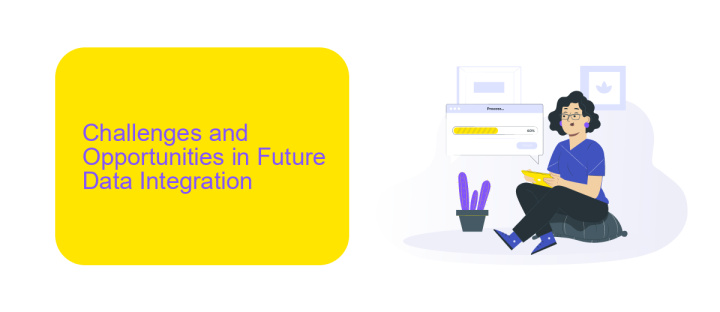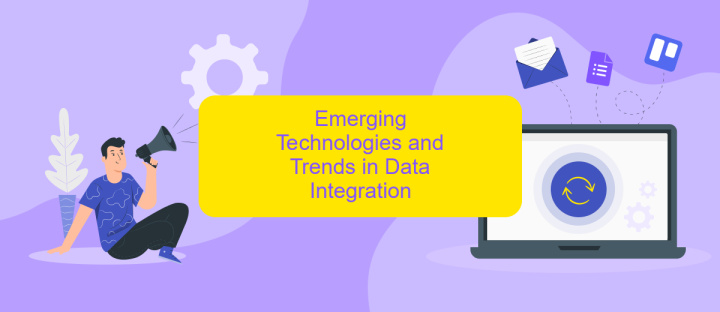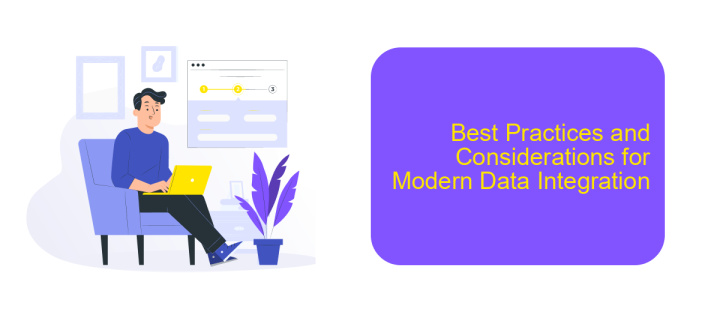Future of Data Integration
The future of data integration holds transformative potential for businesses and technology landscapes. As organizations increasingly rely on diverse data sources, seamless integration becomes crucial for achieving real-time insights, operational efficiency, and strategic advantage. Emerging trends such as artificial intelligence, machine learning, and cloud computing are set to revolutionize how data is collected, processed, and utilized, paving the way for more intelligent and interconnected systems.
Introduction: The Data Integration Landscape
In today's digital age, data integration is a critical component for businesses aiming to leverage data-driven insights. The landscape of data integration has evolved significantly, driven by the increasing volume, variety, and velocity of data. Organizations are now looking for seamless and efficient ways to integrate data from multiple sources to gain a competitive edge.
- Growing need for real-time data integration
- Emergence of cloud-based integration solutions
- Integration of diverse data types and sources
- Enhanced data security and compliance requirements
- Use of AI and machine learning for smarter integration
Among the various tools available, ApiX-Drive stands out as a powerful service that simplifies the integration process. It allows businesses to connect multiple applications and automate data workflows without the need for complex coding. As the data integration landscape continues to evolve, tools like ApiX-Drive will play a crucial role in helping organizations stay agile and competitive.
Challenges and Opportunities in Future Data Integration

The future of data integration is fraught with challenges that require innovative solutions. One significant challenge is managing the sheer volume and variety of data generated by modern enterprises. As data sources multiply, ensuring seamless integration without data loss or corruption becomes increasingly complex. Additionally, maintaining data security and compliance with evolving regulations adds another layer of difficulty. Organizations must also grapple with the need for real-time data processing, which demands robust infrastructure and sophisticated algorithms to ensure timely and accurate data flow.
Despite these challenges, the future holds promising opportunities. Advanced integration platforms like ApiX-Drive simplify the process by offering automated workflows and seamless connectivity between disparate systems. These tools enable businesses to integrate data from various sources effortlessly, ensuring consistency and reliability. Furthermore, the rise of AI and machine learning in data integration promises enhanced data analytics and insights, driving more informed decision-making. As technology continues to evolve, businesses that leverage these advanced tools and strategies will be better positioned to harness the full potential of their data.
Emerging Technologies and Trends in Data Integration

The future of data integration is being shaped by emerging technologies and trends that promise to revolutionize how organizations manage and utilize their data. These innovations are driving efficiency, scalability, and real-time processing capabilities, making data integration more seamless and effective than ever before.
- AI and Machine Learning: Leveraging AI and ML for intelligent data mapping, anomaly detection, and predictive analytics.
- APIs and Microservices: Enhancing flexibility and scalability through API-driven architectures and microservices.
- Real-Time Data Processing: Utilizing stream processing and event-driven architectures for real-time data integration.
- Cloud Integration Platforms: Platforms like ApiX-Drive simplify the integration process with pre-built connectors and automation tools.
- Data Virtualization: Providing a unified view of data from multiple sources without the need for physical data movement.
As these technologies continue to evolve, businesses must stay ahead of the curve to fully leverage their potential. Tools like ApiX-Drive are instrumental in this journey, offering streamlined solutions for integrating diverse data sources effortlessly. By adopting these emerging trends, organizations can unlock new insights and drive innovation.
Best Practices and Considerations for Modern Data Integration

Modern data integration requires a strategic approach to ensure seamless connectivity and data flow across diverse systems. Prioritizing scalability and flexibility is essential, as organizations must adapt to evolving data sources and business needs. Ensuring data quality and consistency is also critical, as it impacts decision-making and operational efficiency.
Leveraging automation tools like ApiX-Drive can significantly streamline the integration process. These tools facilitate real-time data synchronization, reducing manual intervention and minimizing errors. Additionally, they offer pre-built connectors for various applications, enhancing compatibility and reducing setup time.
- Ensure data security and compliance with relevant regulations.
- Implement robust error handling and monitoring mechanisms.
- Regularly update and maintain integration workflows.
- Utilize scalable solutions to accommodate data growth.
In conclusion, adopting best practices in data integration not only enhances operational efficiency but also provides a competitive edge. By utilizing advanced tools like ApiX-Drive, organizations can achieve seamless and reliable data integration, ensuring that they stay ahead in the data-driven landscape.
Conclusion: The Future of Data Integration
The future of data integration is set to be driven by advancements in automation, artificial intelligence, and machine learning. These technologies will enable more seamless and efficient data integration processes, reducing the need for manual intervention and minimizing errors. As businesses continue to generate vast amounts of data, the ability to integrate diverse data sources quickly and accurately will become increasingly critical for gaining actionable insights and maintaining a competitive edge.
Services like ApiX-Drive are at the forefront of this evolution, offering powerful tools to simplify and automate data integration tasks. By providing a user-friendly platform that connects various applications and automates workflows, ApiX-Drive helps businesses save time and resources while ensuring data consistency and accuracy. As the landscape of data integration continues to evolve, leveraging such innovative solutions will be essential for organizations aiming to harness the full potential of their data.
FAQ
What is the future of data integration?
How will AI and machine learning impact data integration?
What are some challenges in the future of data integration?
How can businesses prepare for the future of data integration?
What tools are available for automating data integration processes?
Apix-Drive is a simple and efficient system connector that will help you automate routine tasks and optimize business processes. You can save time and money, direct these resources to more important purposes. Test ApiX-Drive and make sure that this tool will relieve your employees and after 5 minutes of settings your business will start working faster.

